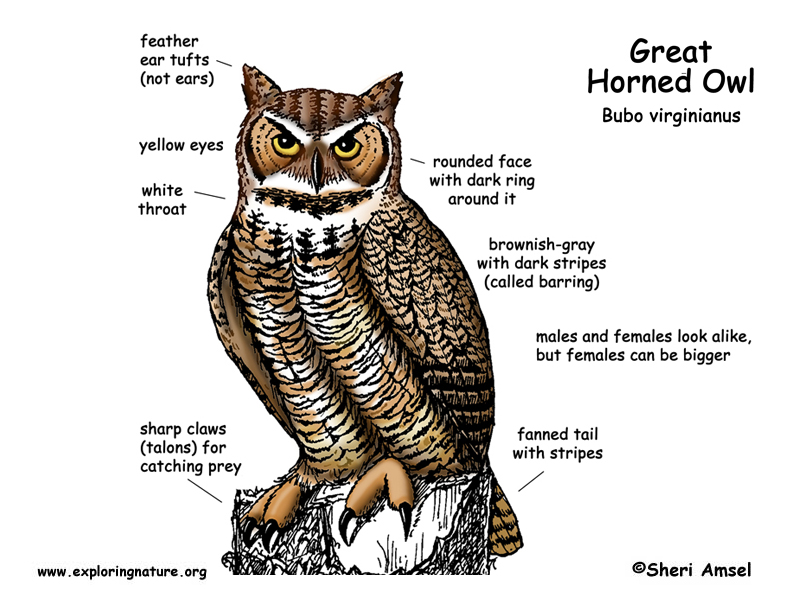

They are one of the most common owls in North America. They are found in Alaska, all across Canada, the U.S., Mexico, Central America and in some areas of South America.
They are found in a many habitats, but like open areas, woodlands and farms. Also found in coniferous forests, deserts, towns and cities.
The largest owl, they can be up to 2 feet tall. They have ear tufts on their heads that look like ears (but aren’t). They are brownish-gray with dark stripes (called barring). They have a white throat, yellow eyes and a rounded face with a dark ring around it. Both males and females look the same, but females can be bigger.
They hunt at night by sitting on a high place and looking out over an open area like a field or parking lot.
They eat many kinds of animals, mostly mammals like mice, voles and rabbits, but will also eat birds like geese and herons. They also will eat snakes, frogs and insects.
They nest in trees, on cliffs, buildings, and even on the ground. They don’t make their own nests. They take over nests made by other birds. Females lay 1-5 round white eggs.
Kingdom: Animalia
Phylum: Chordata
Subphylum: Vetebrata
Class: Aves
Order: Strigiformes
Family: Strigidae
Genus: Bubo
Species: B. virginianus
When you research information you must cite the reference. Citing for websites is different from citing from books, magazines and periodicals. The style of citing shown here is from the MLA Style Citations (Modern Language Association).
When citing a WEBSITE the general format is as follows.
Author Last Name, First Name(s). "Title: Subtitle of Part of Web Page, if appropriate." Title: Subtitle: Section of Page if appropriate. Sponsoring/Publishing Agency, If Given. Additional significant descriptive information. Date of Electronic Publication or other Date, such as Last Updated. Day Month Year of access < URL >.
Amsel, Sheri. "Owl (Great Horned)" Exploring Nature Educational Resource ©2005-2024. December 13, 2024
< http://www.exploringnature.org/db/view/148 >

